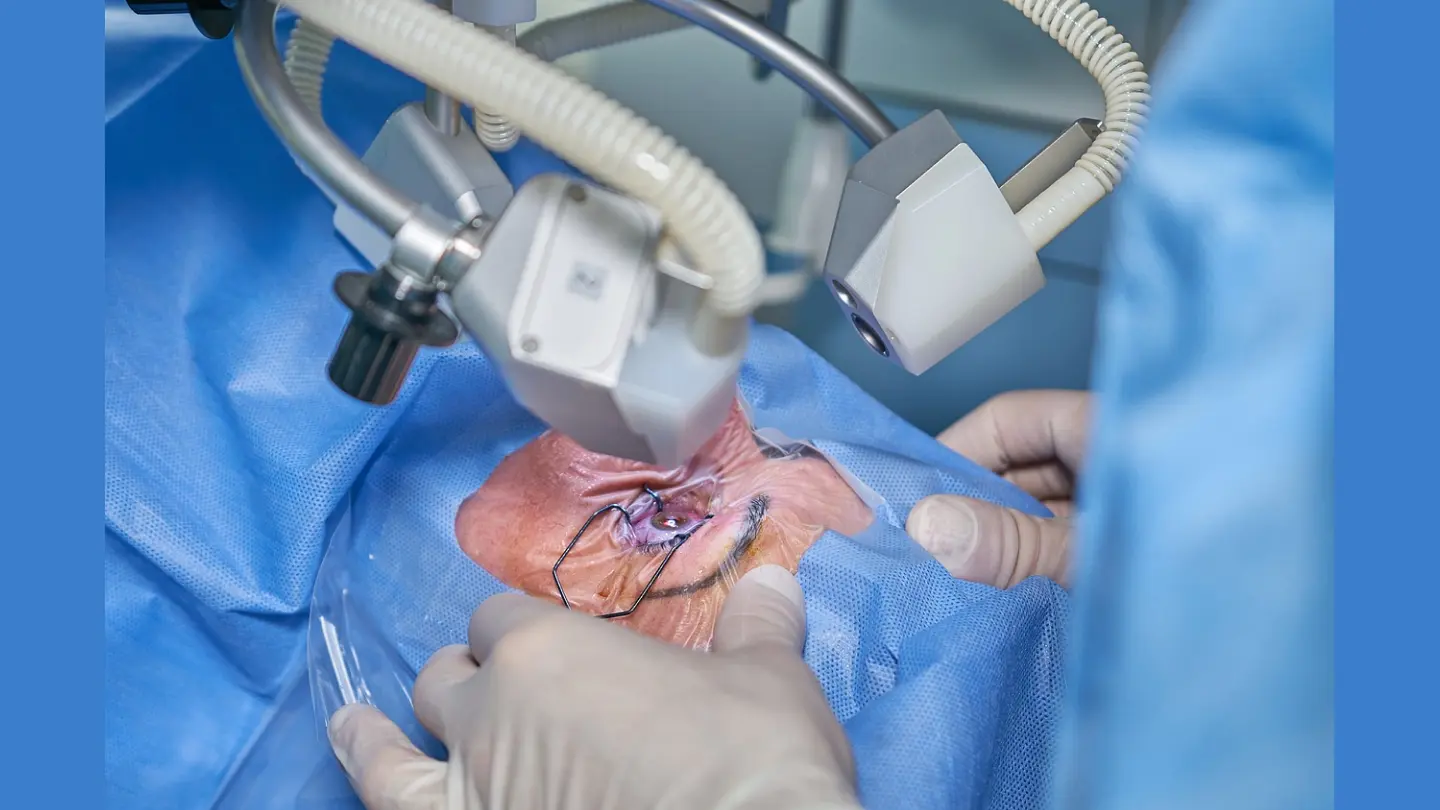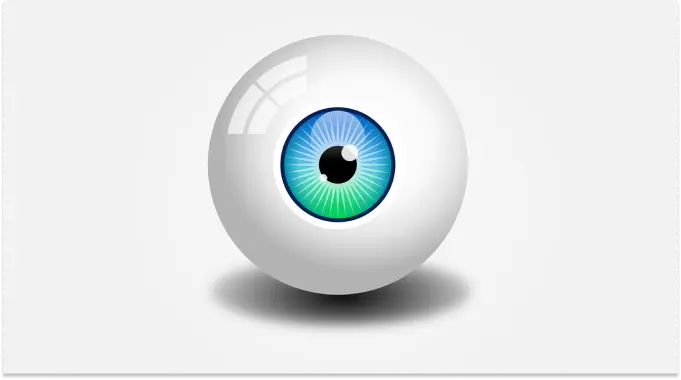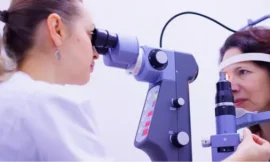You might be concerned about blurry vision and want the safest treatment like LASIK for astigmatism. If you are astigmatic, you are not alone; 8–62% of people worldwide (depending on the area) need glasses or contact lenses to see. There are various factors concerning this optical distortion issue.
Wearing contact lenses and glasses is one of the treatment options available for this eye condition. But if you’re looking for the best FDA-approved laser treatment, in that case, cutting-edge technology-based LASIK is the most suitable choice. LASIK corneal reshaping surgery can help you see better near and far distant objects.
Let’s discuss astigmatism, its signs and symptoms, diagnosis, treatment process (LASIK), eligibility criteria for LASIK and the charges it will cost.
What Is Astigmatism? A Refractive Error
Refractive errors cause most eye disorders including astigmatism. Astigmatism alters the corneal shape, making it oval instead of round. When light enters this cornea and is directed towards the retina, it forms multiple focal points.
Multiple focal points indicate that image formation will be blurry or distorted. Unable to focus on a specific object is a vision problem when a person has astigmatism combined with nearsightedness or farsightedness. Some common signs and symptoms of astigmatism are:
- Blurred or hazy vision.
- Eye discomfort (corneal strain).
- Mild headaches experienced in lightning areas.
- Ocular irritation or itching.
Even if you have astigmatism, you may be unaware of this problem because it is not readily apparent. Schedule a diagnostic test if you suspect any eye conditions listed above.
Make an Appointment for an Astigmatism Diagnosis
Get a consultation with your ophthalmologist for a diagnosis and to receive eye treatment on time. Your eye surgeon will diagnose your astigmatic or other eye conditions with different vision tests. These tests are necessary whether you are going to get LASIK surgery or are considering other treatment methods; tests include:
- Visual acuity eye exam
- Autorefractive measuring
- Keratectomy corneal detection
- Refractive test

1. Visual Acuity Examination
You will be asked to read the word on the board during this eye test or see the object at varied distances. From this, your ophthalmologist will determine visual acuity for myopia, astigmatism, myopia, hyperopia, and presbyopia.
2. Autorefractive Measuring
An optical device called an autorefractor is used to check the refractive error. Patients will be advised to see the light source. When the emitting light enters the eye via the crystalline lens, it will bounce back, and the way of returning light to the device’s direction will be analyzed to diagnose the level of astigmatism.
3. Keratectomy Corneal Detection
In this test, a keratometer is used to see the structure of the cornea. It will take a few seconds to proceed and see the abnormality in the mountain and valley’s structure. It is more advanced, and no discomfort will be experienced during the assessment.
4. Refractive Test
A phoropter device is used to determine the patient’s visual ability. Patients will be directed to see the alphabet of different sizes at specific angles. Based on the visual evaluation, treatment will be prescribed, which can be using glasses, contact lenses or a surgical one.
Treatment options for Astigmatism
Worried about astigmatism with near or distant vision problems. Be calm; various treatment options will put you on the mend to get 20/20 vision. The possible treatment options are;
- LASIK
- PRK
- IOLs / SMILE
- Eyeglasses or contact lenses
LASIK range for treating refractive error caused by astigmatism.
| LASIK | -3.0 diopters |
| PRK | 4.0 diopters |
| IOLs | 0.75 to 4.75 diopters |
| Eyeglasses | 0.75 to 2 diopters |
Why Consider LASIK for Astigmatism? Exceptional Success Rate
LASIK would fix your astigmatism if your eye health were good. It would be decided by the ophthalmologist, who would check your corneal topography report and prescribe you the best treatment. During LASIK, a corneal flap is created with the excimer lasers. The refractive error is then fixed by removing some tissues. It is considered because of
- Painless
- Higher success rate
- Takes only a few minutes
- Results will stay for a longer period
Sometimes, astigmatism develops after LASIK surgery within 6 months. There needs to be a comprehensive treatment plan for this. Your eye surgeon will perform LASIK enhancement surgery and will fix the stigmatized eye.
What Does LASIK Surgery Involve?

After a comprehensive examination of the patient’s astigmatic condition, the ophthalmologist will prepare the patient for surgery. The surgeon will discuss the good and bad with the patient.
In the surgical room, the sufferer will be given numbing drops and local anaesthesia to prevent discomfort. To avoid tears and blinking, optical drops and apparatus will be used.
After this, a device will be set up and directed towards the patient’s eye, through which lasers will come out and create a flap of corneal tissues. The eye surgeon will then access the inner part and remove the tissue to fix the vision blurriness. The procedure is smooth sailing, and no severe complication is expected during and after the surgery.
What is the Recovery Process after LASIK?
The operative healing process is complications-free if you follow your ophthalmologist’s prescription, take medicines, and put optical drops in your eyes as prescribed. After the procedure, you will experience blurred vision and itching or irritation in the eyes. It is to have blurry vision or itching.
Taking a nap and avoiding screens briefly after your surgery will speed up recovery. In the first week after your astigmatism LASIK, you will see things clearly and experience sharper vision than ever before. The corneal will take 3-6 months to heal fully. There is a 95.4% chance that you will get 20/20 vision.
In some patients, dryness of the eyes is expected to be observed. If you got LASIK for astigmatism, your vision may be hazy or cloudy at night or in the lighting areas. You will need glasses to tackle this.
Who Qualifies for LASIK Astigmatism?
- 18-55 years old.
- Have a healthy cornea.
- Not experiencing autoimmune disease.
- Vision defect from a longer period.
You will be qualified for LASIK with astigmatism with near and farsightedness if you are;
The range of visual acuity unit diopter is discussed above. However, your eye surgeon will decide based on your eye condition and what level of vision blurriness or distortion you are experiencing.
How Much Does Lasik Cost for Astigmatism?
The cost for LASIK astigmatism ranges between 1600-2600$. It can vary based on the patient’s eye condition and other factors. In Chicago, the cost that a patient is paying for LASIK will be worth it for astigmatism because of professionalism and advanced technology usage.
Various options are available to cover your LASIK cost. You can cover a portion of the LASIK cost via HSA and FSA and get LASIK based on monthly instalments.
Conclusion:
LASIK for astigmatism is considered the best choice by the ophthalmologist if a patient has a healthy and thick cornea. The surgery will be smooth and pain-free, taking about 20-30 minutes. The recovery process will take about 6 months and give you improved vision.
FAQs-Frequently Asked Questions
1. Can LASIK be done for astigmatism?
Yes, LASIK is a feasible surgical option for astigmatism. This surgery corrects the refractive error by removing corneal tissues, allowing light to fall on the proper focal point of the retina for clear vision.
2. Does insurance cover LASIK for astigmatism?
No, most of the insurance companies don’t cover the LASIK cost. The reason behind this is that they only cover diseases that are concerned with life and disability factors.
3. What is the astigmatism limit for LASIK?
The astigmatism limit for LASIK is -3.0 diopters. For nearsightedness and farsightedness, the visual acuity limit is –0.8D and +6D, respectively.
4. What disqualifies you from LASIK?
The thin cornea, autoimmune disorders, glaucoma, and age below 18 and above 55 disqualify the patient for LASIK.
5. Is laser eye surgery worth it if you have astigmatism?
Laser eye surgery will be worthwhile if you have a healthy cornea for astigmatism. It can give you a better vision than ever before.
6. Can you wear contacts after LASIK?
Yes, you can wear contact lenses after LASIK. Contacts or eyeglasses may be required to see clearly, especially at night or in well-lit areas.
References:
- LASIK for myopia and astigmatism: Safety and efficacy – EyeWiki. (n.d.).
- Solomon, K. D., et. Al. (2009). LASIK World Literature Review. Ophthalmology, 116(4), 691–701.
- What is astigmatism? Symptoms, causes, diagnosis, treatment. (2023, November 14). American Academy of Ophthalmology.
- Zhang, J., et, al. (2023). Epidemiology and Burden of Astigmatism: A Systematic Literature Review. Optometry and Vision Science, 100(3), 218–231.




![Explain Contoura LASIK: A Topography Guided Surgery [2024]](https://healthstreamings.com/wp-content/uploads/2024/01/Contoura-LASIK-2-1-270x162.webp)